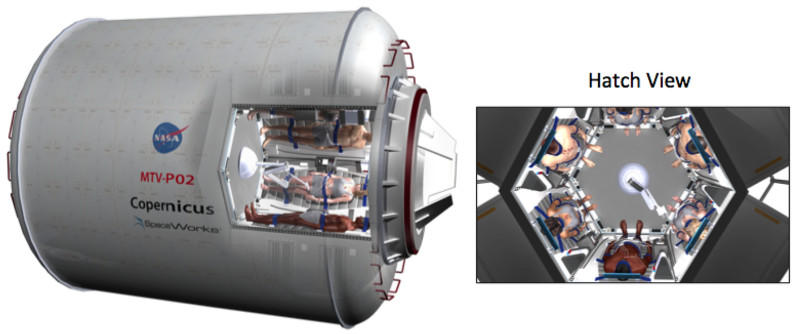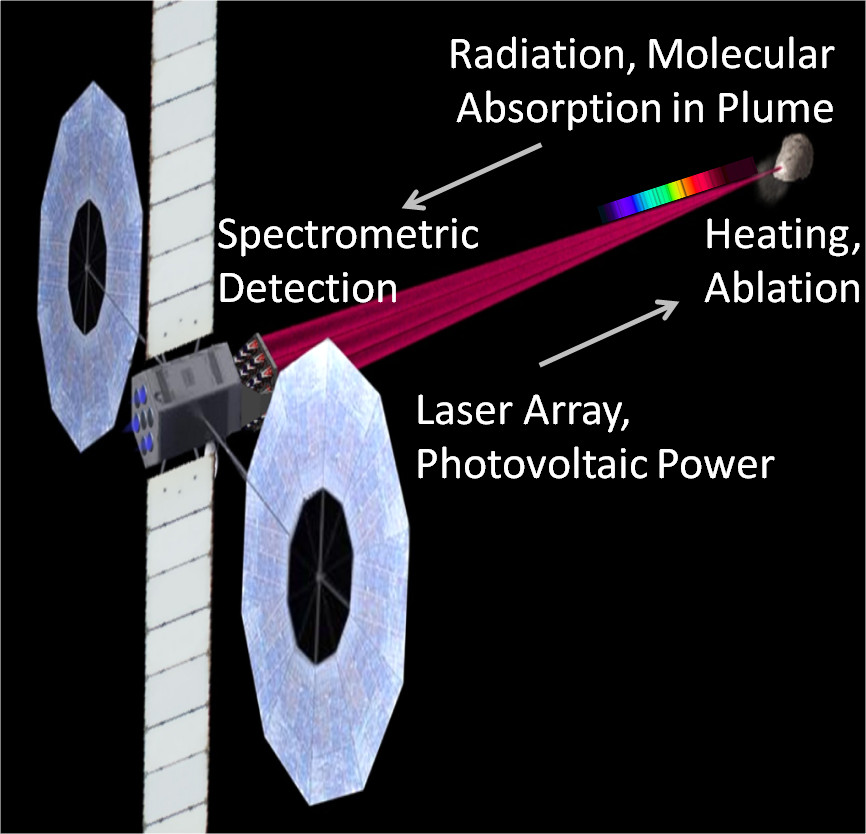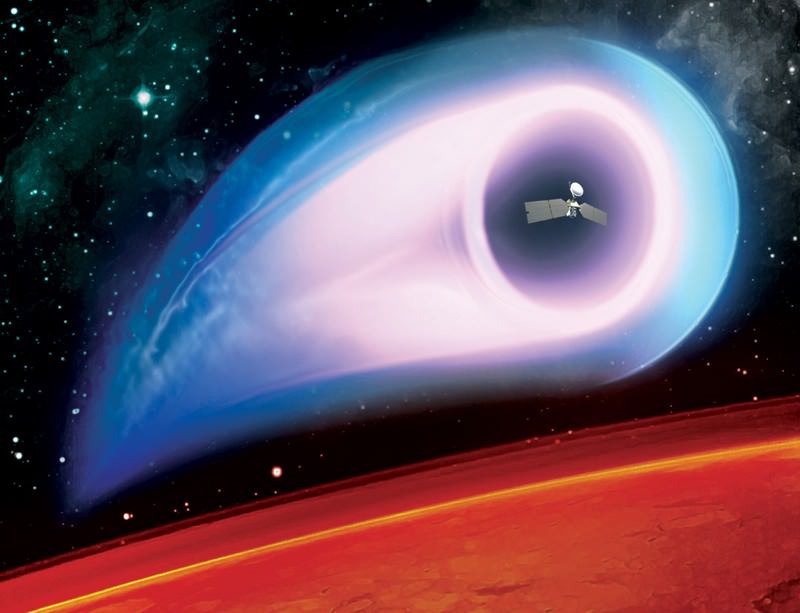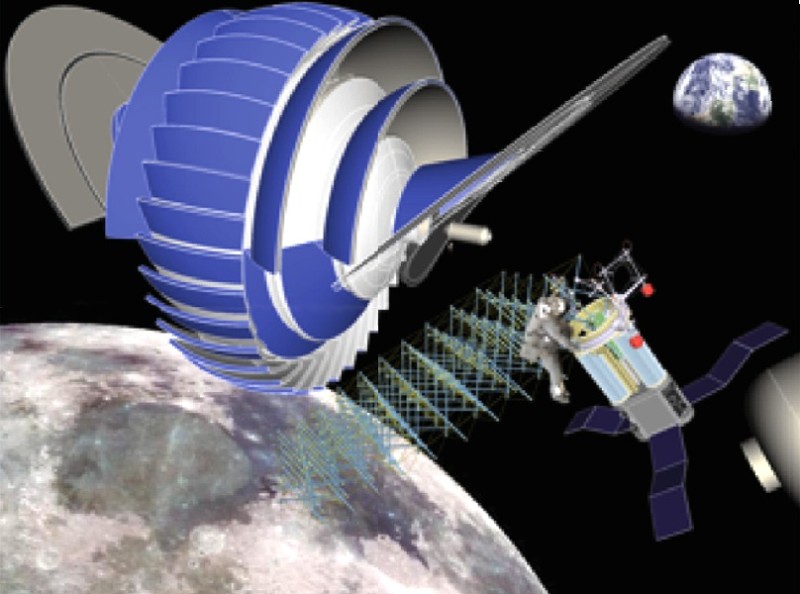NASA breakthrough innovations
The US Aeronautics Agency is pursuing many crazy ideas to realize human cosmic dreams.
Sleepy cocoon

Engineers from Spaceworks Engineering invented flight compartments, which functioned to send astronauts into sleep mode for flights to Mars or beyond. Six months of the trip will not be boring if you can sleep all day.
Head shot by laser probe

Researchers at Caltech thought that landing and drilling into comets and planets, as well as other objects from far away in space, was extremely troublesome. Therefore, they wanted to shoot them with lasers and then study the leaking gas or materials that constitute them with a special spectrometer.
Magnetic brakes

MSNW is designing a force field generator with the ability to create a magnetized plasma shell, with the aim of slowing a spacecraft so it can safely land on a planet. Magnetic brakes using argon gas increase efficiency and reduce risks compared to current atmospheric deceleration techniques, which can heat aircraft and cause danger.
Gravity artificial ship

The human body cannot work well in space, mainly because of harmful radiation and lack of gravity. The Growth-Adapted Tensegrity Structures ship is expected to address these two issues, opening a new path to space ambitions. It creates the same environment on earth, protects them from radiation, and expands the space base.
Cheap gliders replace satellites

Satellites are too expensive and nearly impossible to repair. Dual carrier is a cheap idea that allows monitoring the earth from above. Each roller coaster will be connected by a high-strength cable and harness both wind and solar energy.
Turn asteroids into airplanes

The RAMA project seeks to transform asteroids into "self-propelled mechanical spacecraft" , driving distant asteroids closer to Earth, making it easy to study.
Mining plan in Mars

The plan is to exploit Martian resources for on-site use, helping to reduce the load on hundreds of millions of kilometers of flights.
Tandem project

The Tandem project wants to create self-regulating struts, along with cables subjected to pressure into a load-absorbing structure, allowing landing on dangerous terrain. This will be a shocking invention in spacecraft landing technique.
Nano probe for the icy moon

Instead of spending between $ 1 and $ 5 billion to bring giant machines to the moon to collect specimens, the Nano Icy Moons Propellant Harvester project wants to send microscopic machines to the moon, collecting specimens in size. Very small to send to Earth, greatly reducing costs.
Mixed engines

The Fusion-Enabled Pluto Orbiter and Lander is a project that aims to use a combined engine to bring 1 ton of material to Pluto in 4-6 years, build a power supply station for landing craft from orbit. The advantage is that the helium-3 fuel for this station is extremely rare on Earth, but it can be abundant on the moon.
2-way garbage scanner

Called " Brane Craft ", this is a very thin spaceship powered by two 1-meter-wide Kapton film plates, Brane Craft will weigh about 35 grams, just one bag of potato chips. Its mission is to wipe out dangerous debris in orbit above Earth
Take pictures of the planet with echoes

The idea, called The Stellar Echo Imaging of Exoplanets, will use " vibrating " lights, the " echoes " of the stars, and look there to capture the image. It allows the discovery of extrasolar planets, even qualifying to find aliens if they exist.
Space submarine

Europa - a satellite of Jupiter - is one of the best places to search for alien life, because it exists in an ocean quite similar to the earth. The problem is that the planet is covered in a thick layer of ice. So NASA's Jet Propulsion Laboratory at CalTech created the Cryovolcano Explorer, drilling into this ocean ice and diving class.
Electronic repair equipment

The universe exists countless radiation causing damage to electronic devices. Therefore, a project at NASA's Ames Research Center sought to restore electronic components during a long journey with specially modified microorganisms.
Glider with electronic dust

NASA E-lider will hover over non-atmospheric asteroids with electric "wings" . This spacecraft creates lift by controlling dust or clouds on these planets.
- 5 important inventions that
- Scientists launch a million-dollar project to
- 66-year-old astronaut's plasma rocket - NASA bet on upcoming fruit picking (Part 2)
- The story of CRISPR: From bacteria to the great innovation of the 21st century
- 25 products won the 2006 PC World Innovations Awards
- The 2018 Breakthrough Prize scientific awards are now available
- NASA scientist declared
- 9 inventions that help change the world in 2016
- The Nobel Prize for Breakthrough by the
- 66-year-old astronaut's plasma rocket - NASA bet on upcoming fruit picking (Part 1)
- The most crazy 'scientific' discoveries in 2017
- If you're an astronomer, don't ignore these 5 NASA sites
 Daily use inventions come from universities
Daily use inventions come from universities Special weight loss device helps prevent appetite
Special weight loss device helps prevent appetite 8 inventors were killed by their own inventions
8 inventors were killed by their own inventions Iran invented a motor car powered by water
Iran invented a motor car powered by water